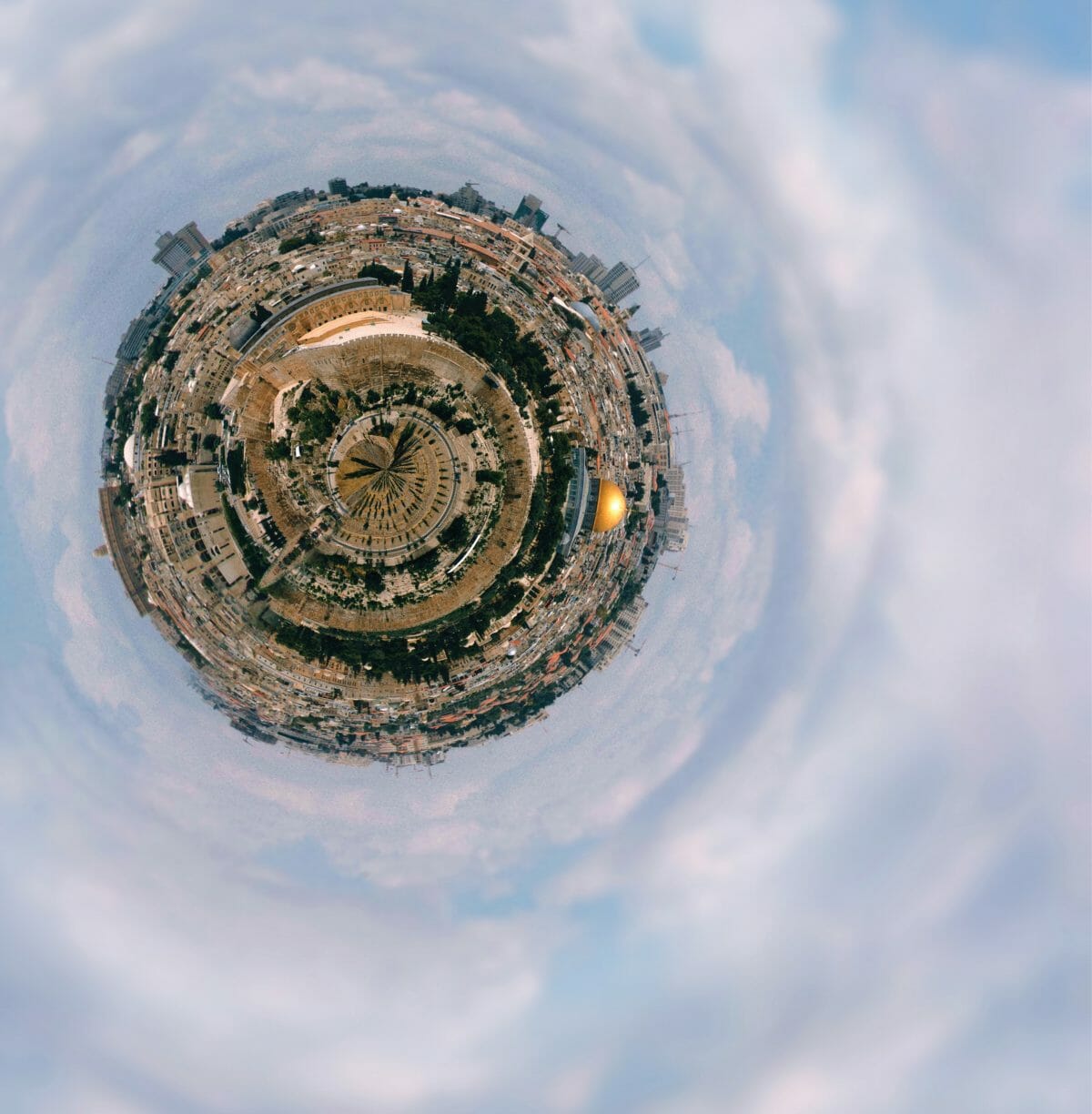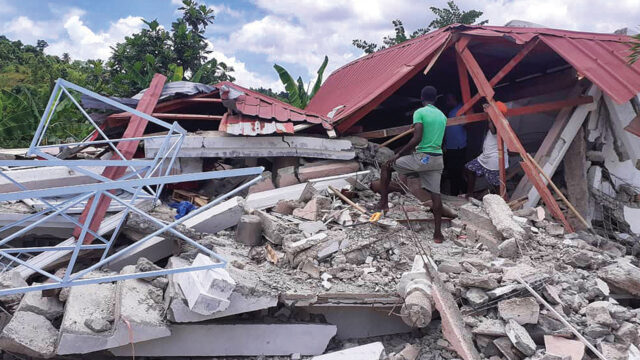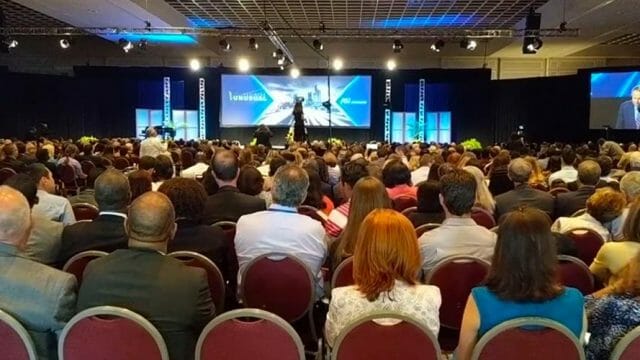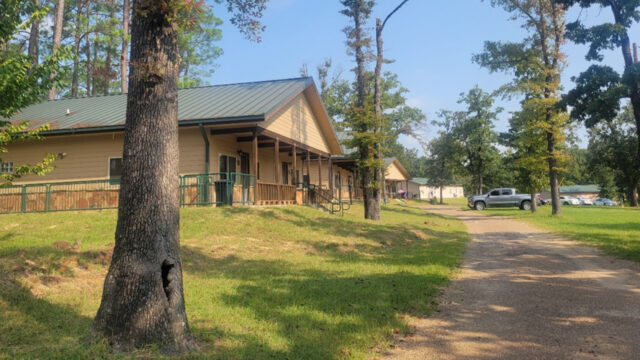The utterly unexpected, unthinkable, and unchangeable was occurring right in front of their eyes. Heavily armed Babylonian soldiers, fiercely set on destruction, forced […]

The utterly unexpected, unthinkable, and unchangeable was occurring right in front of their eyes. Heavily armed Babylonian soldiers, fiercely set on destruction, forced their way into the Temple precincts and started their gruesome work of tearing the sanctuary apart. The subsequent fire completely gutted the First Temple in the year 586 B.C.
For the previous five centuries this elaborate and divinely inspired building had been the center of gravity for the Jewish people, the heartbeat of their religion, the focal point of their economy, and, ultimately, the dwelling place of their God. Animals had been sacrificed on its altar, high priests had entered into its holy and most holy departments, rituals had been performed. Psalms had been written and sung by its choristers and congregations, and gradually everybody had come to the entirely foolish conclusion that the Temple was invulnerable, indestructible, and immune against any outside attack, a notion that the prophet Jeremiah had strongly warned against: “Do not trust in these deceptive words: ‘This is the Temple of the Lord, the temple of the Lord, the temple of the Lord’” (Jer. 7:4, ESV¹). The place that signified God’s presence and prefigured the plan of salvation, pointing in every nook and cranny to the coming Messiah and His ministry both on earth and in heaven, had essentially become a talisman, a mascot, a glorified lucky charm. Superstition and bigotry reigned supreme. They fell, together with the Temple walls, at the hand of Nebuchadnezzar’s army.
The Centerpiece
It’s interesting to note that the center of the Psalms, a book that provides us with a cross section of Israelite faith and biblical theology, is focusing on these tragic events in poetic form alongside the historical accounts of the destruction of Jerusalem and the Temple (2 Kings 25; 2 Chron. 36; Jer. 52). Psalm 74 offers a moving and painfully detailed account of the obliteration of the sanctuary (verses 1-11), leaving the reader with the key questions of “why” and “how long” (verses 9, 10). Psalm 73 already introduces the sanctuary theme when it tackles the question of God’s righteousness (or “theodicy”). This crucial question, close to the middle of the book of Psalms, is dealt with in a verse at the center of the poem (Ps. 73:17) that is pivotal to an understanding of human suffering and God’s righteousness.
It’s in the sanctuary, both geographically and theologically, that this question is resolved. If one looks on the other side of Psalm 74, there is a poem about God as judge who eventually will right all wrongs and bring deliverance to His people, even after the destruction of the Temple and the Babylonian exile. This will take place at the “proper time” (Ps. 75:2), thus answering the questions of “how long” and “why” raised in the previous psalm. The judgment scene of Psalm 75 concludes with another sanctuary image, i.e., the cutting off of the horns of the wicked (Ps. 75:10), which is reminiscent of the cutting off of the altar’s horns anticipated in Amos 3:14. We wonder, Why does the sanctuary play such an important and central role in the book of Psalms?
The focus on the sanctuary in Psalms 73-75 provides a structural epicenter of the Psalms that correlates also to the theological center of the Psalter (which is, incidentally, also located at the seams between Book 2 [Pss. 42-72] and Book 3 [Pss. 73-89]). It offers an interesting clue, together with the beginning and end of the Psalms where the sanctuary plays an equally important role.
The Frame
Psalm 1:3 describes the righteous as planted by streams of water, an image that clearly connects to sanctuary language throughout the Old Testament and depicts the righteous as planted in the Temple precincts (cf. Ex. 15:17; Isa. 32:2; Pss. 46:4; 65:9; 92:12-14; Jer. 17:7-13; Eze. 47:12).² Similarly, the very end of the book of Psalms is also replete with echoes of sanctuary language.
In Psalm 150:1, 2, two Hallelujah shouts frame a twofold indication as to where the final praise of psalms is to take place. Human praise is transported to the heavenly courts into “His sanctuary.” While the Hebrew word qodesh can refer to the earthly sanctuary, the parallelism with “His mighty firmament” in Psalm 150:1 highlights a cosmic and eschatological dimension to the praise using language associated with Creation (Gen. 1:6). The “mighty acts” correspond to the idea that God’s historical deeds span from Creation to re-creation.
There is an interesting sequencing of musical instruments in Psalm 150:3-5, moving from instruments used predominantly in a sanctuary context (“trumpet, lute, and harp”; cf. Lev. 25:9; 1 Chron. 15:16) to instruments that are used in both cultic but also noncultic occasions, especially for the celebration of victories and deliverances (“timbrel, stringed instruments, flutes, and cymbals”; cf. Ex. 15:20; 1 Sam. 18:6; 2 Sam. 6:5). The dance (see also Ps. 149:3) is likewise associated with these manifestations of festive joy as the cultic procession moves out from the heavenly sanctuary into the cosmic courts. The twofold repetition of the “cymbals” with the additional qualification of “clashing” announces an audible climax in the final symphony of the Psalter, which introduces the sweeping universal statement in 150:6, “Let everything that has breath praise the Lord.” The Hebrew word neshamah, “blowing, breath,” refers primarily to humankind (cf. Gen. 2:7) but could also be extended to the rest of beings created by God (cf. Gen. 7:22). Psalm 150 depicts a cosmic procession out from the heavenly sanctuary that fills the universe with praise, a scene that replicates the final moments of the great controversy.³ The sanctuary, both earthly and heavenly, serves as the theological beginning, center, and end of the book of Psalms, pointing to the sacrificial death of Christ on the cross and His ministry in the heavenly sanctuary. The psalmists, amid joy and sorrow, praise and pain, always returned to the sanctuary to find comfort, reorientation, and, ultimately, salvation.⁴
What does the sanctuary message mean to twenty-first-century Seventh-day Adventists? Is it possible that it has just become a “lucky charm” of correct doctrine that safeguards us against erroneous winds of doctrine or that distinguishes us from the rest of evangelical Christianity? Or maybe it has disappeared into the recesses of an outdated Bible study series and evangelistic campaign? For the authors of the psalms it was the center of gravity because it told them the story of salvation with the Messiah at its heart. In that earthly and heavenly sanctuary deliverance was found (Pss. 25-34), prayers were answered (Ps. 5), justice was meted out (Ps. 11), doubts were dissolved (Ps. 73), community was experienced (Pss. 120-134), feasts were celebrated (Ps. 23), and so much more. The entire spectrum of a life of faith played out within its precincts. The sanctuary message still has the same power in the twenty-first century.
¹ Scripture quotations marked ESV are from The Holy Bible, English Standard Version, copyright © 2001 by Crossway Bibles, a division of Good News Publishers. Used by permission. All rights reserved.
² Dragoslava Santrac, “The Psalmists’ Journey and the Sanctuary: A Study in the Sanctuary and the Shape of the Book of Psalms,” JATS 25, no. 1 (2014): 23-42. Similarly, Psalm 2, which serves as the second portal into the world of the book of Psalms references the sanctuary through the mention of Zion and the holy hill (Ps 2:6).
³ See Ellen G. White, The Great Controvery (Mountain View, Calif.: Pacific Press Pub. Assn., 1911), p.678.
⁴ See the unpublished paper by Richard M. Davidson, “The Heavenly Sanctuary in the Old Testament” (1970), available at: http://works.bepress.com/richard_davidson/17/.








